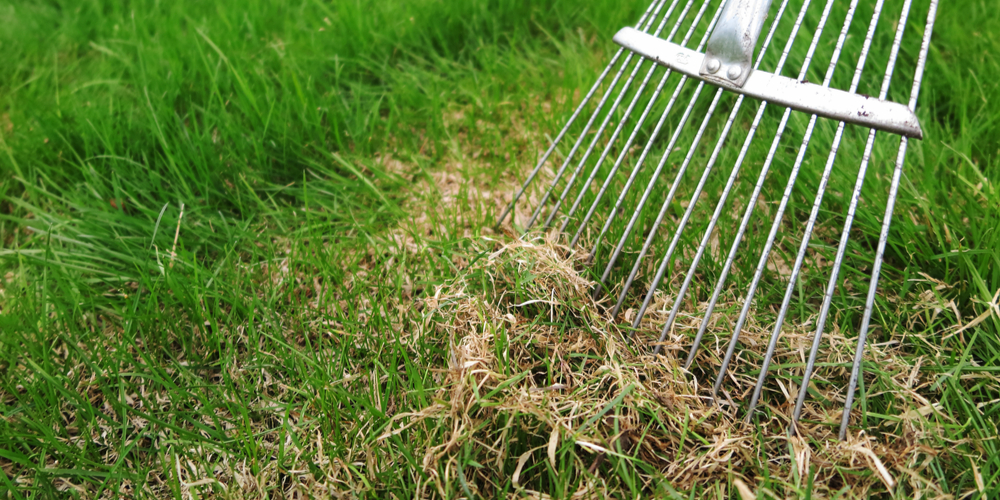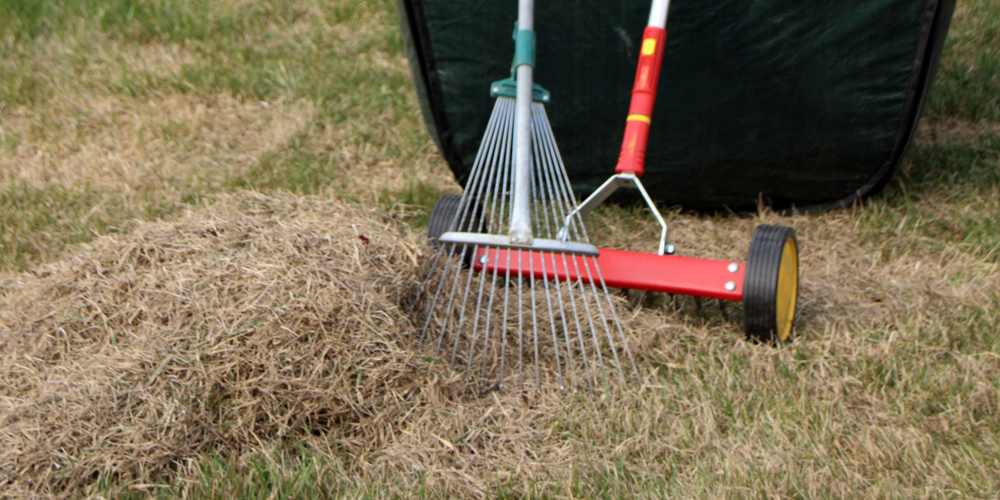When it comes to lawn care, there are tasks you should do to keep your yard looking its best. One of those tasks is dethatching, which is removing dead grass and debris from the surface of the grass. There is some confusion about power raking and whether or not it is the same as dethatching.
What Is the Difference between Dethatching and Power Raking?
Power raking and dethatching are standard lawn care practices that are often confused. Both involve running a machine with sharp blades over the lawn, but there is an essential difference between the two.
Lawn owners usually use a power rake when the grass is just beginning to grow in the spring. The purpose of doing this is to remove dead grass and debris accumulated over the winter.
On the other hand, dethatching is done in the fall, after the grass has stopped growing. Its purpose is to remove the thatch layer – a build-up of living and dead grass roots and stems – that can impede water and nutrient uptake.
Power Raking Loosens Compacted Soil
It is a lawn care practice used to fix compacted soil. Compacted soil is when the dirt particles in an area are pushed together too tightly and can happen for various reasons but is often the result of too much foot traffic on the grass.
Power raking helps loosen up the compacted soil so that air and water can reach the grassroots.
Dethatching is for Removing Debris
Dethatching, on the other hand, is a lawn care practice used to remove debris from the surface of your lawn. This debris can include dead grass, leaves, and twigs.
Dethatching is vital because it helps improve your lawn’s drainage and aeration. It also helps to reduce the chances of diseases and pests taking up residence on your property.
How Are They the Same?
Both methods are used to remove unwanted growth from a lawn. Power raking uses a rake attached to a power source, such as a tractor or ATV. The rake has sharp teeth that quickly remove debris, leaving the lawn looking clean and fresh.
Dethatching also uses a machine, but instead of teeth, it has rotating blades which slice through the layers of thatch. This layer comprises dead grass, leaves, and other organic matter.
Although power raking and dethatching serve similar purposes, they are typically used for different types of lawns.
If you have a lawn with thatches more than the usual, dethatching is the best way to remove it. Raking is a better option if the yard doesn’t have thatch but has dead grass and debris.
No matter what type of lawn you have, both power raking and dethatching can be beneficial. These processes help remove unwanted growth and improve the overall health of your property. When done correctly, they can leave your yard looking its best.
Which Method is Right for Your Lawn?
If your lawn looks patchy and thin, it may be time to dethatch or power rake. Both processes remove built-up layers of dead grass, moss, and debris, preventing new growth from taking hold. But how can you tell which approach is right for your lawn?
Here are some factors to consider:
- If your lawn is mostly bare, with only a few patches of green remaining, you will likely need to do power raking. This procedure will remove the thatch layer and allow new seedlings to take root.
- If your lawn is primarily green, but you notice an increase in weeds and moss, dethatching may be the best option to remove the build-up of organic matter that provides ideal conditions for weeds and moss.
- If your lawn is generally in good condition, but you want to boost it for the upcoming growing season, dethatching can help remove any built-up layers of dead grass and debris.
Final Thoughts
Dethatching and power raking are two lawn care practices that are often confused. But while they may serve similar purposes, they are pretty different. To remove compacted soil, you need power raking, while dethatching is used to remove debris.
Regardless of your chosen process, follow the directions carefully to avoid damaging your lawn. With a little effort, you can achieve a greener, healthier lawn that is the envy of the neighborhood.
Related Article: Can You Dethatch With a Rake?

